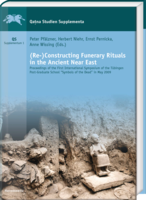|
weitere Titel zum Thema:
Download:
The first supplementary volume of the series “Qatna Studien” presents the contributions of an international symposium held at the University of Tübingen in May 2009. This symposium was initiated and organized by the students and scholars of the post-graduate school ‘Symbols of the Dead’. The topic of the symposium was to evaluate the possibilities in reconstructing Ancient Near Eastern funerary rituals from available archaeological and textual evidence. Contributors from seven countries discussed many aspects of ritual behaviour linked to death, the after-life and the variations in ritual treatment of the deceased before, during and after the actual burial. Among the many issues raised were questions related to the kinds of rituals linked to death in different cultural surroundings, the intentions of the actors conducting such rituals, their meaning and social importance, the question of ancestors and grave goods, and of grave offerings, the reasons for and the meaning of different burial types, and the theoretical and methodological approaches to ritual. Archaeological case studies were introduced, available textual evidence was presented, and even an ethnographic perspective from Kyrgyzstan is contributed. The archaeological and philological sources presented come from a wide geographical framework including Syria and Northern Mesopotamia, the Syro-Anatolian regions, the Southern Levant, Egypt, and Iran. Their chronological frame spans from the third to the first millennium BC. These contributions will enrich our understanding of the various cultural approaches to death in the Ancient Near East and increase our insight into many aspects of funerary rituals.
|






